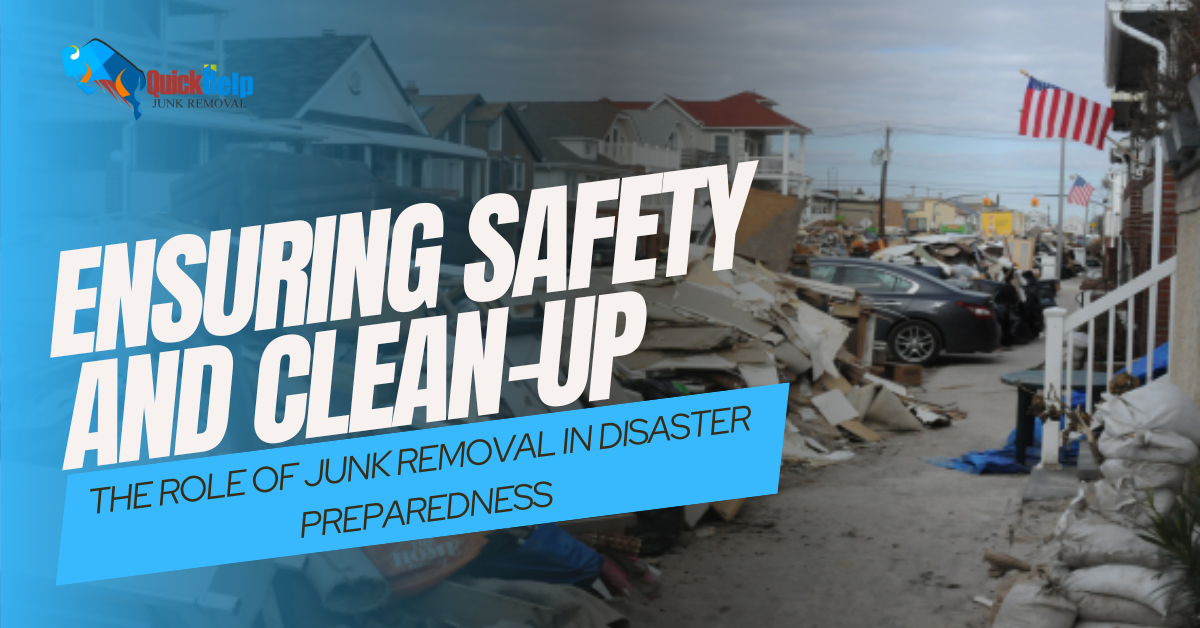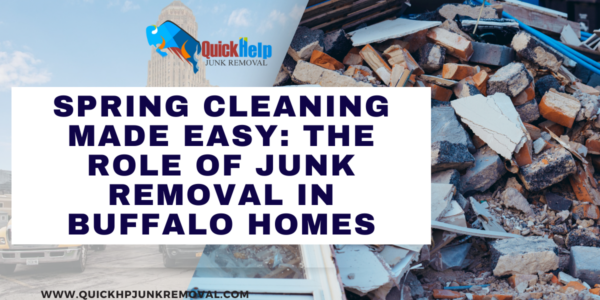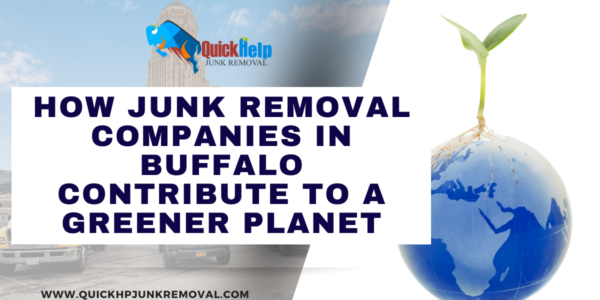Role of Junk Removal in Disaster Preparedness
The Role of Junk Removal in Disaster Preparedness. Natural disasters can strike at any moment, leaving behind a trail of destruction that can be overwhelming. From hurricanes and floods to earthquakes and wildfires, these catastrophic events not only pose immediate threats to life and property but also create massive amounts of debris and waste. In such dire circumstances, the role of junk removal becomes pivotal in disaster preparedness, ensuring safety and effective cleanup operations.
Immediate Response and Safety:
When a disaster strikes, the first priority is to ensure the safety of individuals and communities. Debris, damaged structures, and hazardous materials can create life-threatening situations. Junk removal teams are often among the first responders, equipped to quickly clear roads, pathways, and affected areas to enable access for emergency services and evacuations. This swift response can save lives.
Minimizing Environmental Hazards:
Disasters can result in the release of hazardous materials and pollutants, posing severe threats to the environment. Proper junk removal includes the safe disposal of these materials, preventing contamination of soil, water bodies, and air. This environmentally responsible approach is critical for the long-term recovery and restoration of affected areas.
Restoring Infrastructure:
The aftermath of a disaster often involves a vast amount of debris, including damaged buildings, fallen trees, and debris from destroyed homes. Junk removal companies play a crucial role in clearing this debris, making it possible for infrastructure repair and rebuilding efforts to commence. This is essential for communities to return to normalcy.
Preventing Disease Outbreaks:
Accumulated debris can become a breeding ground for disease-carrying vectors such as mosquitoes and rodents. Junk removal helps prevent potential disease outbreaks in disaster-affected areas by eliminating these breeding sites promptly. This proactive measure is vital for public health and safety.
Effective Resource Management:
Proper junk removal involves sorting and recycling materials when possible, reducing the burden on landfills. This efficient resource management not only benefits the environment but also conserves valuable resources for rebuilding and recovery.
Supporting Community Resilience:
Timely and organized junk removal efforts contribute to community resilience. Knowing that professionals are on hand to handle cleanup and debris removal allows individuals and families to focus on their safety and recovery, providing them with a sense of security during challenging times.
Embracing Technology:
In recent years, technology has significantly enhanced the capabilities of junk removal companies in disaster response. Advanced equipment, such as drones and GPS technology, aids in assessing and prioritizing cleanup efforts, making the process more efficient and responsive.
Community Engagement:
Beyond the physical cleanup, junk removal companies often engage with the affected communities, offering support, resources, and guidance on safe disposal practices. This collaborative approach fosters a sense of solidarity and community spirit during the recovery process.
Conclusion
In conclusion, the role of junk removal in disaster preparedness cannot be overstated. It’s a multifaceted service that goes far beyond just picking up trash. It’s about safeguarding lives, protecting the environment, and aiding in the recovery and rebuilding of communities. By recognizing the importance of junk removal in disaster response, we can better prepare for these unpredictable events and ensure a swifter, safer recovery for all.




